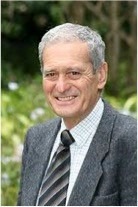Purpose of the course
By the end of this module you will be able to describe:
- The history of Te Whare Tapa Whā as a model of wellness
- The concepts of Te Whare Tapa Whā.
Have you heard of this model before? Where have you worked with it or seen it?
Te Whare Tapa Whā
 Professor Sir Mason Durie, who has affiliation with Rangitane, Ngati Kauwhata and Ngati Raukawa tribes, has been presenting an integrated approach to healthcare for more than twenty-five years.
Professor Sir Mason Durie, who has affiliation with Rangitane, Ngati Kauwhata and Ngati Raukawa tribes, has been presenting an integrated approach to healthcare for more than twenty-five years.
His model, known as Te Whare Tapa Whā, brings together the physical, mental, social and spiritual dimensions of health and healing.
We are multi-dimensional
This holistic view supports that we are interested in engaging with, and healing, the whole person.
In identifying these four aspects, the Te Whare Tapa Whā model recognises us as being multi-dimensional.
By contrast…
In 1947, the World Health Organisation gave a definition of health which still stands today:
“Health is a state of complete physical, mental, and social well-being and not merely the absence of disease or infirmity.”
Professor Sir Mason Durie’s model, Te Whare Tapa Whā, challenges the one-dimensional view that health is the same thing for all people. He brings together the physical, mental, social and spiritual dimensions of health and healing.
